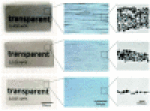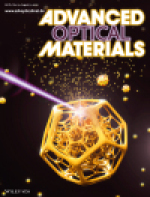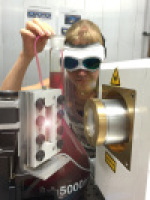Research

Functionalization of laser-generated nanoparticles

This research topic aims to functionalize the unique advantages of laser-generated nanoparticles. Especially alloy nanoparticles (e.g. AuFe, FeNi), magnetic nanoparticles (e.g. Ho, YIG, Fe2O3) or optically active nanoparticles (e.g. Y2O3, Ho2O3) are of interest. Applications of these nanoparticles include optics, detection and catalysis. Embedded in polymers an additional value can be placed on the nanomaterial for instance for nanoparticle-filled varnished, conducting polymers or laser optics.
Ref: Solid solution magnetic FeNi nanostrand–polymer composites by connecting-coarsening assembly,
S. Barcikowski, T. Baranowski, Y. Durmus, U. Wiedwald, B. Gökce, Journal of Materials Chemistry C 3, 10699 (2015)
New Materials for Laser-Based Additive Manufacturing

Lasers in production processes, including additive manufacturing, are becoming more and more powerful, but the materials powders available are often inadequate for today's laser processing tasks. The main objective of this research direction is the synthesis of new metal and polymer powders for efficient laser-based 3D additive manufacturing by means of nanoparticle-additivation.
Ref: Plasmonic seasoning: Giving color to desktop laser 3D-printed polymers by highly dispersed nanoparticlesT. Hupfeld, A. Wegner, M. Blanke, C. Doñate-Buendía, V. Sharov, S. Nieskens, M. Piechotta, M. Giese, S. Barcikowski, B. Gökce, Advanced Optical Materials 8, 2000473, (2020)
Strategies and Applications for High Power Ultrashort Lasers

The productivity of laser ablation in liquids is still a drawback of this method. Hence, increasing the productivity is a main goal of this research topic. With the advent of high-power ultrashort lasers, laser power isn
't an issue anymore so that the applicability of laser spectroscopical approaches such as pulse and beam shaping can be explored for laser material processing. Additionally, multibeam processing by diffractive optical elements is studied.
Ref: Continuous Multigram Nanoparticle Synthesis by High-Power, High-Repetition-Rate Ultrafast Laser Ablation in Liquids,
R. Streubel, S. Barcikowski, B. Gökce, Optics Letters 41, 1486 (2016)

